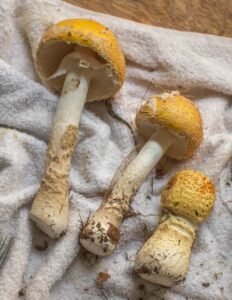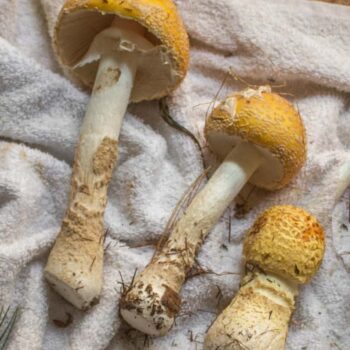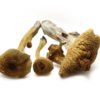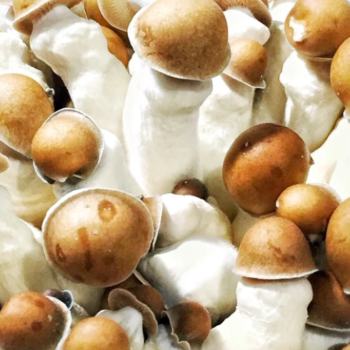Amanita Muscaria Spores
$150.00 – $900.00Price range: $150.00 through $900.00
Amanita Muscaria Spores: An In-Depth Exploration.
Description;
Amanita muscaria spores, commonly known as the fly agaric, is one of the most recognizable mushrooms in the world. Characterized by its striking red cap adorned with white spots, this mushroom has captivated the imagination of many cultures throughout history. It is found in temperate and boreal regions of the Northern Hemisphere and has been introduced to various parts of the Southern Hemisphere. Despite its beauty, A. muscaria is known for its psychoactive properties and potential toxicity, making it a subject of both fascination and caution among mycologists and foragers alike.
Taxonomy and Classification
Amanita muscaria belongs to the family Amanitaceae and is classified under the genus Amanita. It is the type species of the genus and is further categorized into various subspecies, which may differ in cap color and other morphological features. The scientific classification of A. muscaria is as follows: Domain: Eukaryota, Kingdom: Fungi, Division: Basidiomycota, Class: Agaricomycetes, Order: Agaricales, Family: Amanitaceae, Genus: Amanita, Species: A. muscaria. This classification highlights its distinct characteristics and its relationship with other fungi within the Amanita genus.

Morphological Characteristics
Amanita muscaria spores exhibits several distinctive morphological features. The cap typically ranges from 8 to 20 centimeters in diameter and transitions from a globose to a flat shape as it matures. The vibrant red color of the cap may fade with age or after rainfall. The gills are free and white, and the spore print is also white. The stipe, or stem, is white and can reach heights of 5 to 20 centimeters, often featuring remnants of the universal veil in the form of rings or patches [[1]](https://en.wikipedia.org/wiki/Amanita_muscaria). These characteristics make A. muscaria easily identifiable, although it can sometimes be confused with edible species like Amanita caesarea spores.
Psychoactive Properties
One of the most intriguing aspects of Amanita muscaria spores is its psychoactive properties, primarily attributed to two compounds: ibotenic acid and muscimol. Ibotenic acid is a neurotoxin that can cause a range of symptoms, including confusion, dizziness, and hallucinations. Upon ingestion, ibotenic acid is rapidly converted to muscimol, which is responsible for the majority of the psychoactive effects. These compounds interact with the central nervous system, leading to altered perceptions and experiences.
Historical and Cultural Significance
Amanita muscaria spores has a rich history of use in various cultures, particularly among indigenous peoples in Siberia, where it has been used as an entheogen in shamanistic rituals. The mushroom’s psychoactive effects have made it a subject of interest in both traditional and modern contexts. In popular culture, A. muscaria is often depicted in literature, art, and video games, further cementing its status as an iconic mushroom.
Toxicity and Poisoning Cases
Despite its allure, Amanita muscaria spores is considered toxic, and ingestion can lead to serious health issues. Symptoms of poisoning typically include gastrointestinal distress, central nervous system effects, and in severe cases, coma or death. Accidental poisoning is rare due to the mushroom’s distinctive appearance, but it can occur, particularly when individuals mistakenly identify it as an edible species. Prompt medical attention is crucial in cases of suspected poisoning, and treatments often involve supportive care and decontamination measures.
Identification and Foraging
Foragers interested in collecting Amanita muscaria spores should exercise caution and ensure proper identification. The mushroom’s unique features, such as its bright red cap and white spots, make it relatively easy to recognize. However, it can be confused with other Amanita species, some of which are highly toxic. It is essential to consult reliable field guides and, if possible, seek guidance from experienced foragers or mycologists before consuming any wild mushrooms.
Preparation and Consumption
While some cultures have developed methods to detoxify and consume Amanita muscaria spores, these practices require careful preparation. The primary method involves boiling the mushrooms to leach out the water-soluble toxins, followed by discarding the cooking water. However, this process is not foolproof, and there have been cases of severe intoxication due to improper preparation As such, many mycologists and foraging experts advise against consuming A. muscaria due to the risks involved.
Legal Status and Regulations
The legal status of Amanita muscaria spores varies by region. In some countries, it is legal to possess and consume, while in others, it may be regulated or prohibited. For those interested in foraging or using A. muscaria for its psychoactive effects, it is essential to be aware of local laws and regulations to avoid legal repercussions. Amanita muscaria spores for sale.

Common Questions About Amanita Muscaria
1. Is Amanita muscaria edible?
While some cultures consume A. muscaria after proper preparation, it is generally considered toxic and potentially dangerous. The risks associated with its consumption often outweigh the benefits.
2. What are the effects of consuming Amanita muscaria?
Consumption can lead to a range of effects, including hallucinations, confusion, and altered perceptions. Severe poisoning can result in coma or death, making caution essential.
3. How can I identify Amanita muscaria?
Look for its distinctive red cap with white spots, white gills, and a white stem with ring remnants. Proper identification is crucial to avoid confusion with toxic species.
4. Where does Amanita muscaria grow
Amanita muscaria is found in temperate and boreal regions, often in association with coniferous and deciduous trees. It typically fruits from late summer to early autumn.
5. Can Amanita muscaria be cultivated?
Cultivating A. muscaria is challenging due to its mycorrhizal nature, requiring specific tree associations. Most foragers collect it from the wild rather than attempting cultivation.
Conclusion
Amanita muscaria is a fascinating yet potentially dangerous mushroom that has captured the attention of cultures worldwide. Its striking appearance, psychoactive properties, and historical significance make it a subject of interest for mycologists, foragers, and enthusiasts alike. However, the risks associated with its consumption and the potential for confusion with toxic species necessitate caution. Understanding the characteristics, effects, and legal status of A. muscaria is essential for anyone interested in this iconic mushroom.
| Qty | 1 Oz, 1/2P, 1/4P, 1P |
|---|
Be the first to review “Amanita Muscaria Spores” Cancel reply
Related products
Psilocybin Mushrooms
Psilocybin Mushrooms
Psilocybin Mushrooms
Psilocybin Mushrooms
Psilocybin Mushrooms
Psilocybin Mushrooms
Psilocybin Mushrooms
Mushrooms












Reviews
There are no reviews yet.